Ball High School
School Website: https://ball.gisd.org/
2023-2024 field trip data: BallHS2024.pdf
Galleries: 2017-2018 | 2018-2019 | 2019-2020 | 2020-2021 | 2021-2022 | 2022-2023 | 2023-2024 | 2024-2025
Ball High School students conduct surveys at DEL01 in the Dellanera RV Park and JAM02 in Jamaica Beach (Fig. 1). Both sites monitor beach nourishment and Coastal Erosion Planning and Response Act (CEPRA) beach and dune restoration activities. They map shoreline positions along Babe’s Beach (west of 61st Street) in front of the Galveston Seawall. A new monitoring site was established in Galveston Island State Park (GISP1) to replace BEG02 (Fig. 1). The new site is easier and safer for students to access.
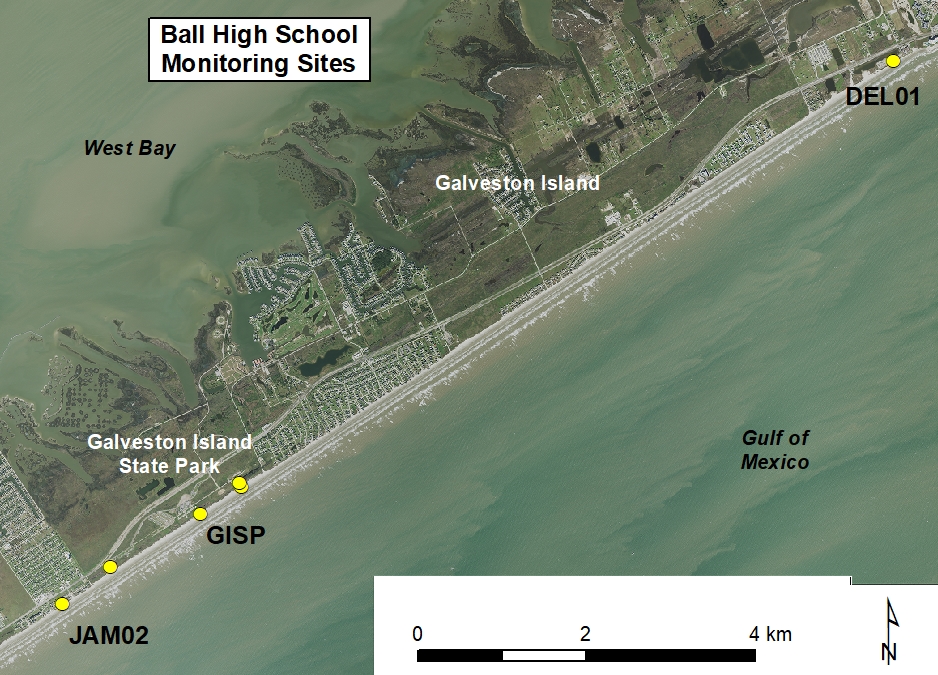
Figure 1. Location map of Ball High School monitoring sites
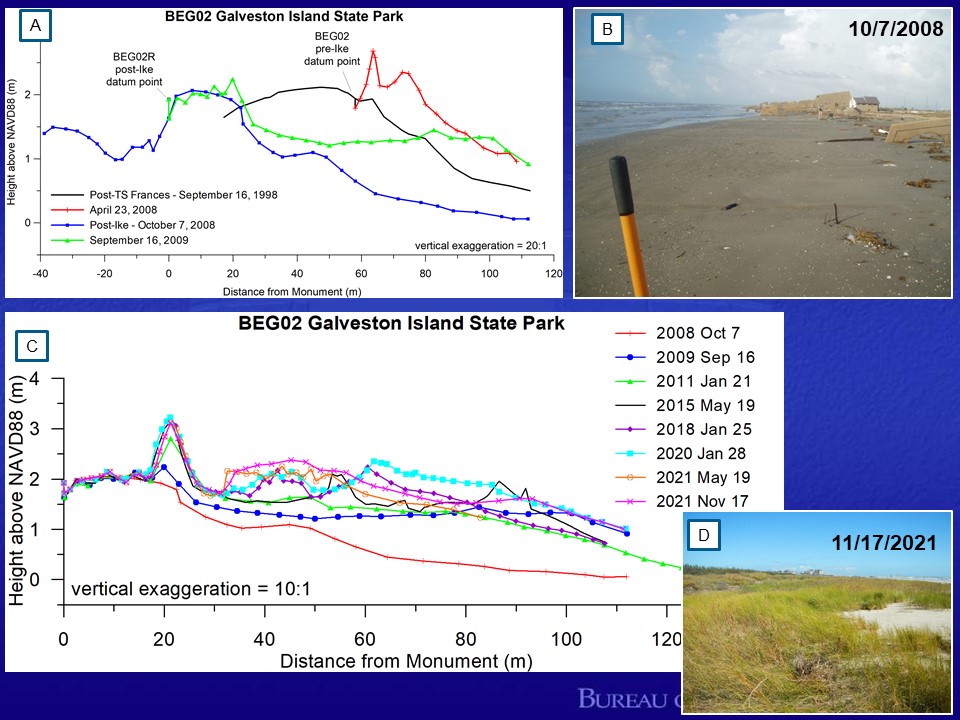
Figure 2. Hurricane Ike impacts and beach and dune recovery at BEG02 in Galveston Island State Park. (A) Beach-profile plots from BEG02 comparing the post–Hurricane Ike profile with a pre-storm profile from early 2008 and the post–Tropical Storm Frances profile from September 1998. Data from September 2009 (1-year post-storm) is also included. (B) Photo of Galveston Island State Park after landfall of Hurricane Ike showing beach and dune erosion and damage to park infrastructure. (C) Beach profile plots from October 2007 through November 2021 showing the recovery of the beach and dune system following hurricane Ike. (D) Photo from November 17, 2021 looking northeast of the vegetated coppice dunes at the park. Notice the toe of the washover feature.
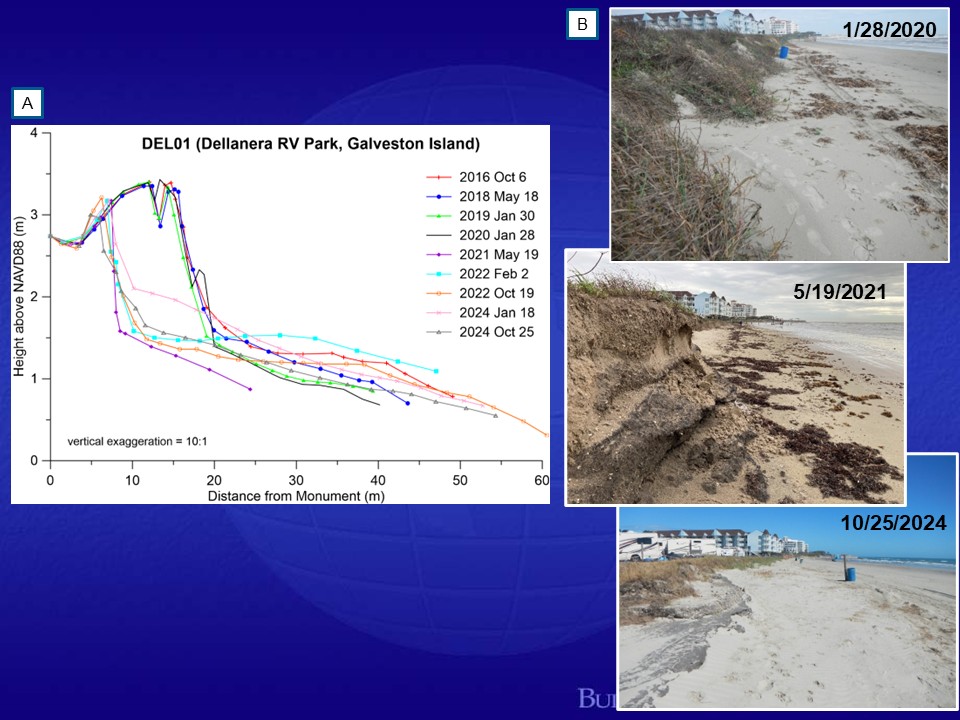
Figure 3. Monitoring changes at DEL01 at the Dellanera RV Park on Galveston Island. (A) Beach profile data between October 2016 and October 2024. (B) A series of photos looking northeast along the dune face and vegetation line from January 28, 2020; May 19, 2021; and October 25, 2024. The 2020 hurricane season caused significant erosion of the beach and dune restoration project. Note the scarped dune and narrow beach in the middle picture. The wide beach in the photo from October 2024 is the result a well performing beach nourishment project that was completed in early 2023.
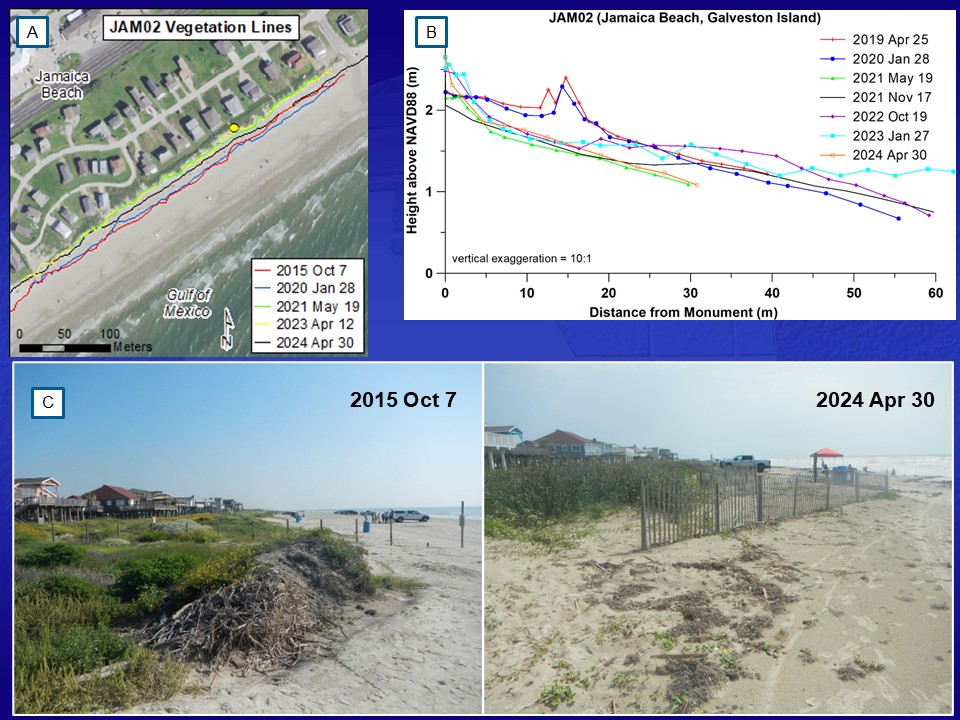
Figure 4. Monitoring of changes at JAM02 in Jamaica Beach, community adjacent to Galveston Island State Park. (A) Vegetation line positions between October 2015 and April 2024 and (B) beach profile data between April 2019 and April 2024. (C) Photos looking northeast along the vegetation line from October 7, 2015 and April 30, 2024. The 2020 hurricane season caused erosion of the dune restoration project and landward movement of the vegetation line. Sand fencing had been placed along the vegetation line in the second photo to trap windblown sand and promote dune growth.
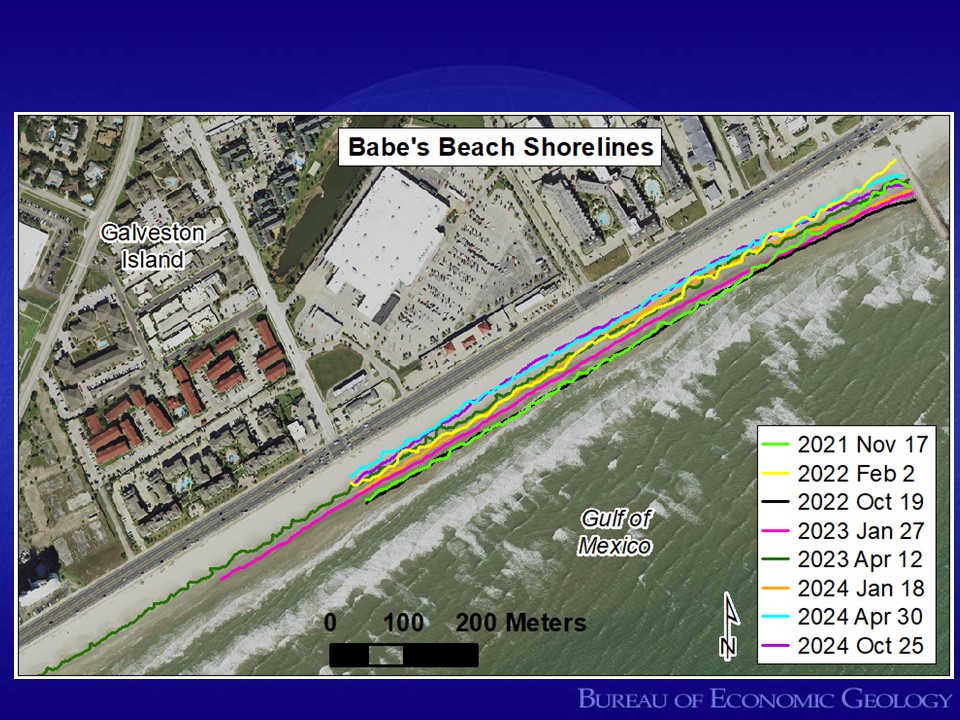
Figure 5. GPS-mapped shoreline positions at Babe’s Beach on Galveston Island.
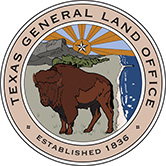
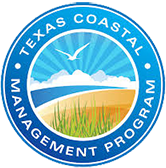

.png)